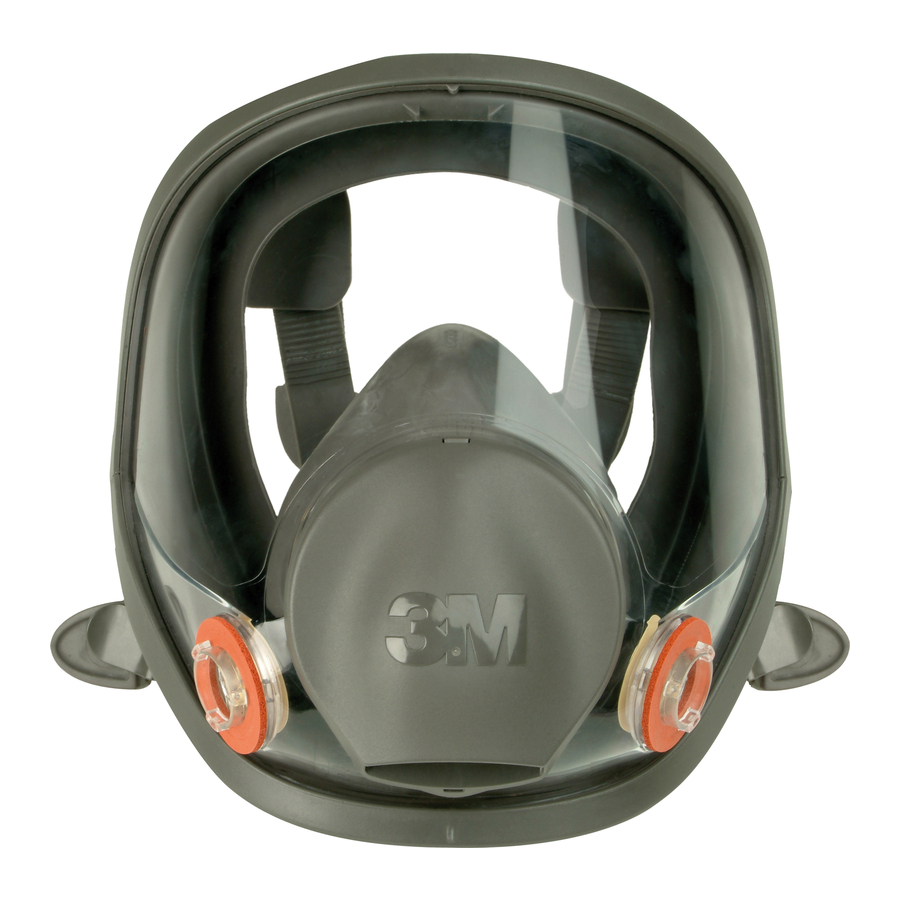3M 7026 Kullanıcı Talimatları - Sayfa 12
Solunum Ürünleri 3M 7026 için çevrimiçi göz atın veya pdf Kullanıcı Talimatları indirin. 3M 7026 16 sayfaları. Half facepiece respirator 6000 series

QUANTITATIVE FIT TESTING
Quantitative Fit Testing (QNFT) can be conducted using a 3MTM 601 Fit Test Adapter and P100 filters such
as the 3M™ 2091 or 7093 P100 Particulate Filters.
QUALITATIVE FIT TESTING
Qualitative Fit Testing (QLFT) with the 3M™ FT-10 or FT-30 Qualitative Fit Test Apparatus can be
conducted using any of the NIOSH approved particulate filters.
Fit testing should be conducted using the heaviest cartridge, canister, filter or combination that each wearer
will use in their work environment. Respirators should also be fit tested while wearing any personal
protective equipment (PPE) the wearer may use in their work environment that may affect the fit of the
respirator (e.g. hoods, hardhats, safety glasses, hearing protections, etc.).
Note: For further information concerning fit testing, contact 3M OH&ESD Technical Service at
1-800-243-4630 or a 3M location in your region. In Canada call Technical Service at 1-800-267-4414.
INSPECTION, CLEANING, AND STORAGE
Inspection Procedure
The 3M 6000 series facepiece must be inspected before each use to ensure that it is in good operating
condition. Any damaged or defective parts must be replaced before use. The following inspection procedure
is recommended.
1. Check facepiece for cracks, tears and dirt. Be certain facepiece, especially faceseal area, is not distorted.
2. Examine inhalation valves for signs of distortion, cracking or tearing.
3. Make sure that head straps are intact and have good elasticity.
4. Examine all plastic parts for signs of cracking or fatiguing. Make sure filter gaskets are properly seated
and in good condition.
5. Remove exhalation valve cover and examine exhalation valve and valve seat for signs of dirt, distortion,
cracking or tearing. Replace exhalation valve cover.
Cleaning and Storage
Cleaning is recommended after each use
Do not clean with solvents. Cleaning with solvents may degrade some respirator components and
reduce respirator effectiveness. Inspect all respirator components before each use to ensure proper
operating condition. Failure to do so may result in sickness or death.
1. Remove cartridges and/or filters.
2. Clean facepiece (excluding filters and cartridges), with 3M™ 504 Respirator Wipes (not to be used as the
only method of cleaning) or by immersing in warm cleaning solution, water temperature not to exceed
120˚ F, and scrub with soft brush until clean. Add neutral detergent if necessary. Do not use cleaners
containing lanolin or other oils.
12
